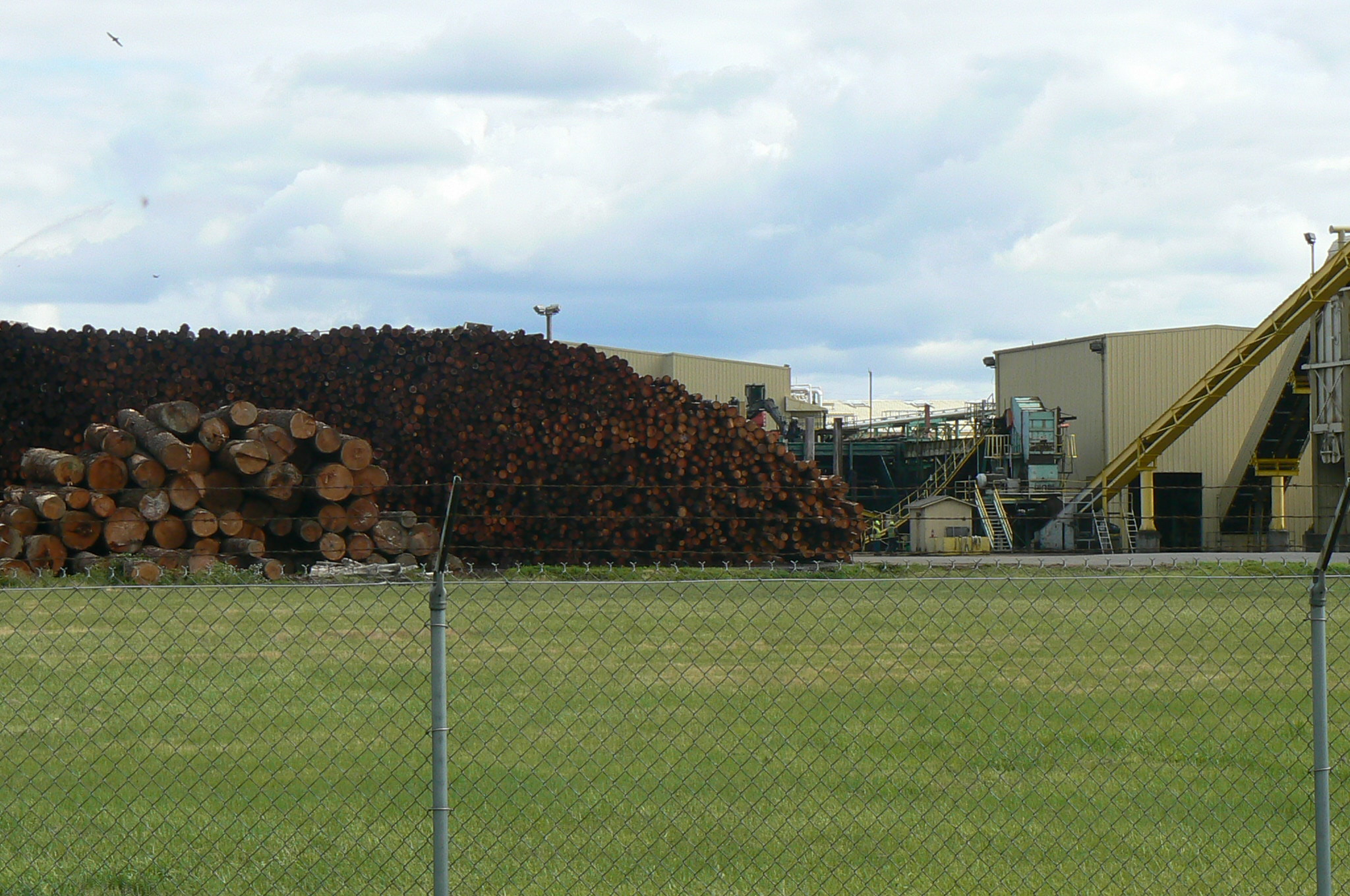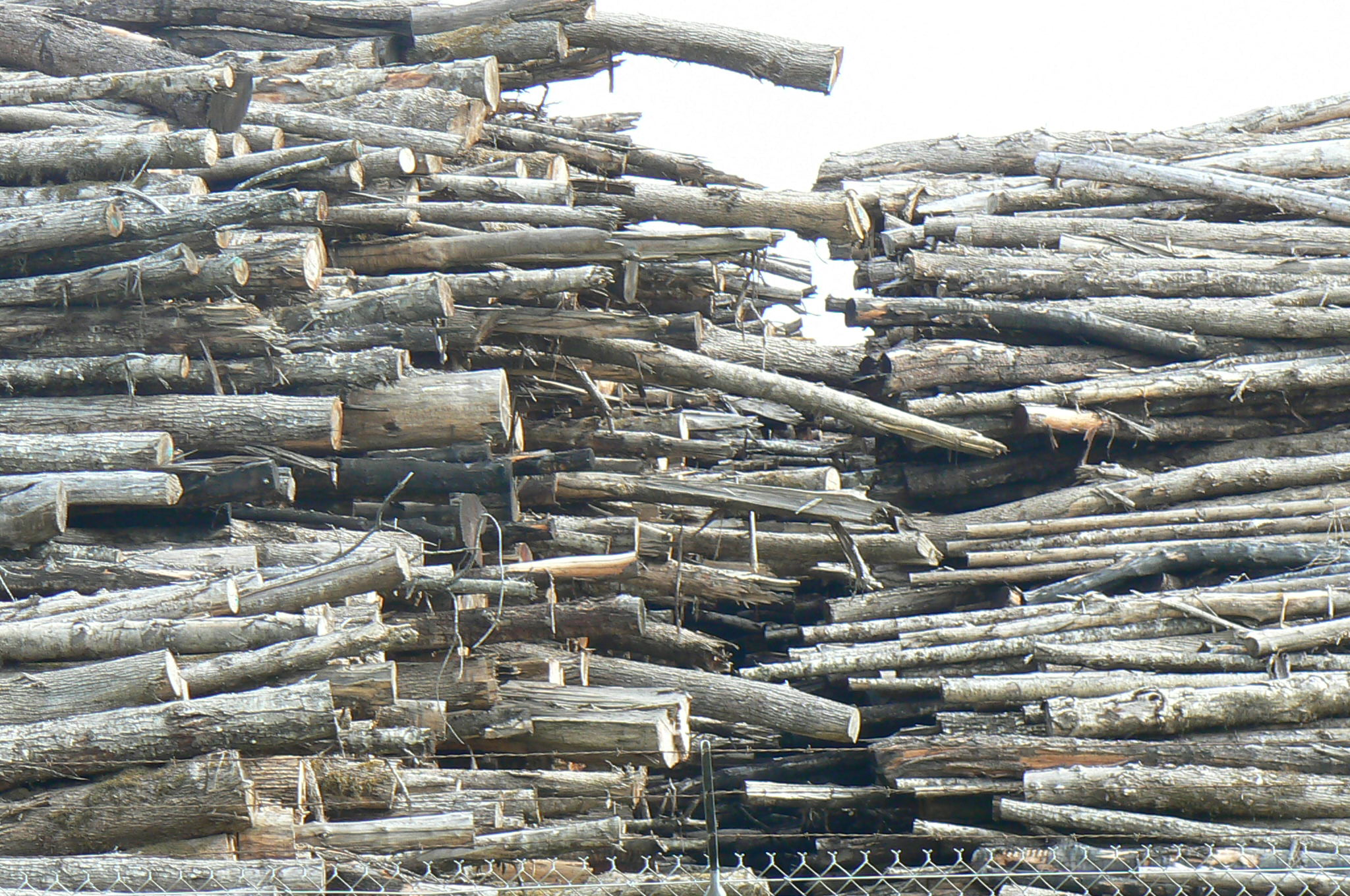Don’t worry. This article won’t flesh out the arguments for or against an assault weapons ban, mandatory background checks, or restrictions on magazine size. It doesn’t actually have anything to do with guns at all.
Whether you think the National Rifle Association (NRA) is a fortress of freedom or a bulwark bloodlust, there’s one thing almost everyone can agree on: how effective the organization has been in its mission-driven advocacy to “protect the Second Amendment right to bear arms.”
The secret of the NRA’s success (besides copious funding)? Crystal clear messaging and uncompromising political pressure. Two aspects the national anti-biomass movement must adopt in order to halt the construction of dirty biomass energy facilities... [READ MORE]
Biomass Burning in Oregon
- by Samantha Chirillo, Energy Justice Network
Timber Town Eugene, Oregon buzzes along nearly oblivious to the forest destruction and herbicide poisoning around it. Much like a frog in a pot of water brought to a slow boil, the timber industry relies on what anthropologist and author Jared Diamond referred to as “landscape amnesia” in his book, Collapse — slow environmental degradation that would be offensive if only at a faster pace.
The scenario with the Seneca Sustainable Energy biomass power facility, located adjacent to the Seneca timber mill, is disturbingly similar. The State and local air authorities might let Seneca have its way, but no ad campaign on the part of Seneca is going to hide the reality that biomass energy, like the chemical clearcut regime it emerged from, is a dirty, destructive dead-end... [READ MORE]
 Trees to be chipped for Seneca Sustainable Energy biomass incinerator in Eugene, Oregon [Photo: Samantha Chirillo]
Trees to be chipped for Seneca Sustainable Energy biomass incinerator in Eugene, Oregon [Photo: Samantha Chirillo]
Biomass Industry Reveals Plans to Turn U.S. into European Resource Colony
Think the days of Europe exploiting the U.S. as a resource colony are behind us? Welcome back to the 18th century. A July Biomass Magazine and Pellet Mill Magazine webinar series, "Satisfying Europe's Growing Appetite for American Wood Pellets," lays out the biomass industry’s disturbing plans to convert North American forests into wood pellets to fuel European biomass incinerators—further depleting U.S. forests, soils, and watersheds, while hastening runaway climate change. Tim Portz of BBI International hosted the industry webinar, joined by guest speakers Seth Ginther of the U.S. Industrial Pellet Association, and Dave Tenny of the National Alliance of Forest Owners, a U.S.-based timber industry front group.
In 2012, the European Union (E.U.) burned 4.36 million metric tons of wood pellets for electricity, according to U.S. Industrial Pellet’s Seth Ginther. The U.K.’s portion was 30%, the Netherlands at 24%, Belgium at 16%, Denmark at 9%, and the rest shared by Sweden, Italy, Poland and a few other nations. The E.U.’s 2012 demands were up significantly from 3.23 million tons in 2011, 2.62 million tons in 2010, and 1.77 million tons in 2009.
Projected E.U. consumption for 2020 ranges from 25-70 million tons per year, though Ginther believes the “true number is 40-50 million” tons... [READ MORE]
Burning Wood is Not the Solution to Climate Change
- by Sophie Bastable, Biofuelwatch
Under the guise of ‘green energy’, burning wood in power stations has become a massive growth industry in the UK, with by far the biggest demand coming from coal-fired power station operators. So far, five of them have announced plans to convert, either partly or completely, to biomass.
These are Tilbury in Essex, Ironbridge in Shropshire, Eggborough and Drax in Yorkshire, and Lynemouth in Northumberland. Between them these power stations will require almost six times as much wood as the UK produces in total every year. That statistic alone shows just how unsustainable wood-fired power stations are and it spells disaster for the world’s natural habitats, human rights, and our hopes of combating climate change... [READ MORE]
 Trees to be chipped for Seneca Sustainable Energy biomass incinerator in Eugene, Oregon [Photo: Samantha Chirillo]
Trees to be chipped for Seneca Sustainable Energy biomass incinerator in Eugene, Oregon [Photo: Samantha Chirillo]
Biomass and Other Transition Fuels are a False Solution
- by Karen Orr, Energy Justice Network
Clean, truly renewable energy could fully power a large electric grid 99.9 percent of the time by 2030, according to recent research published by the Journal of Power Sources.
This can be done economically and without government subsidies if a well-designed combination of solar power, wind power and storage in batteries and fuel cells is implemented.
Biomass/incineration, ethanol, nuclear power and other false solutions have been promoted as “transition” fuels or technologies, yet the capital-intensive nature of these technologies make transition impossible... [READ MORE]